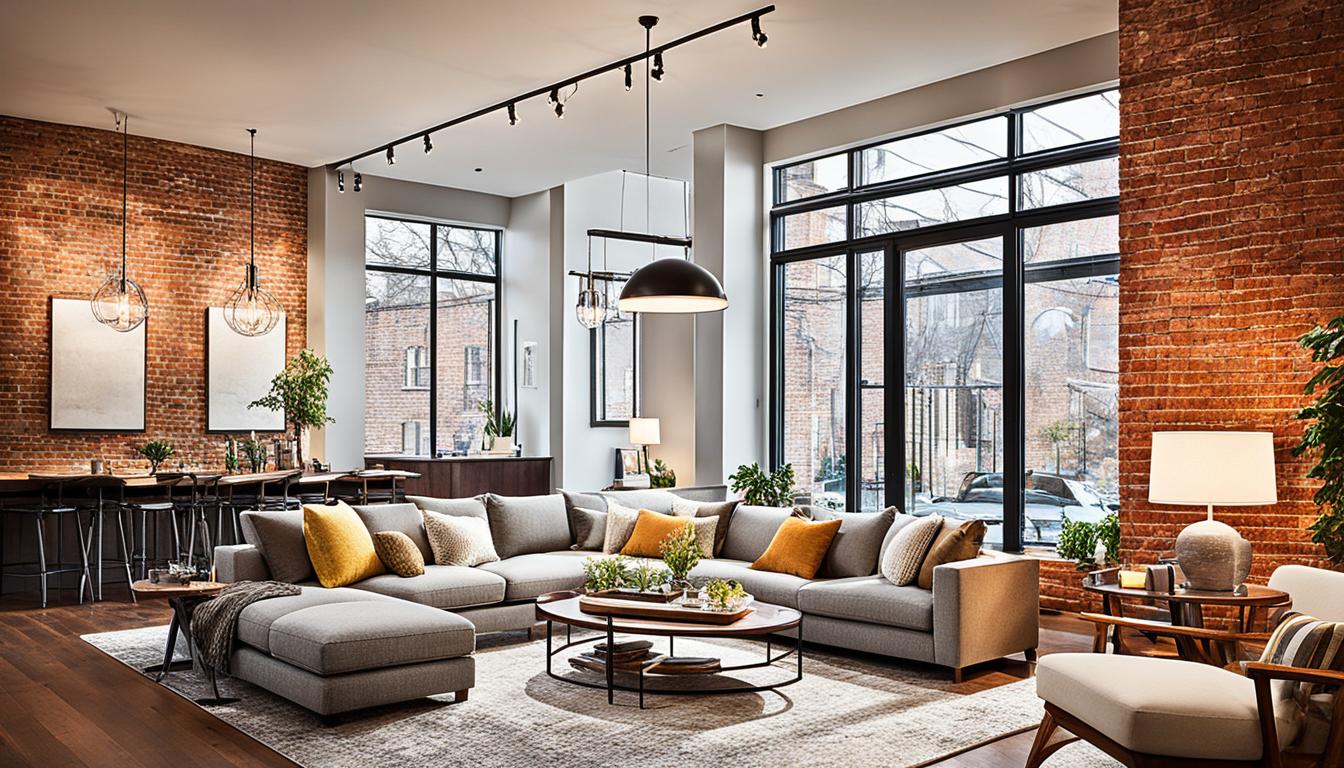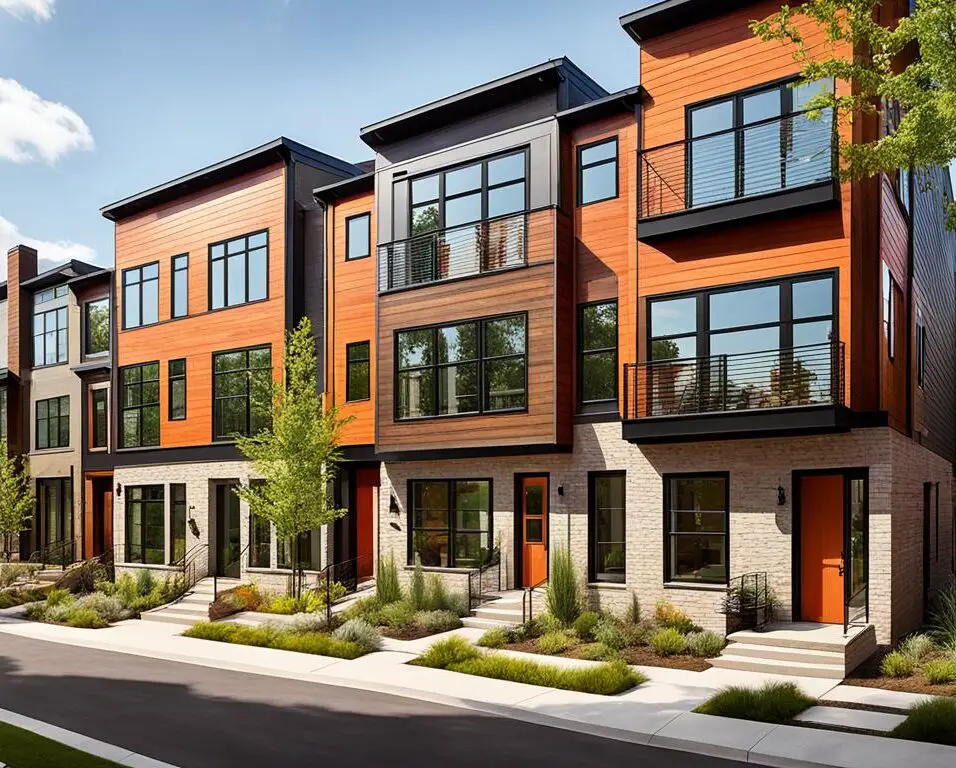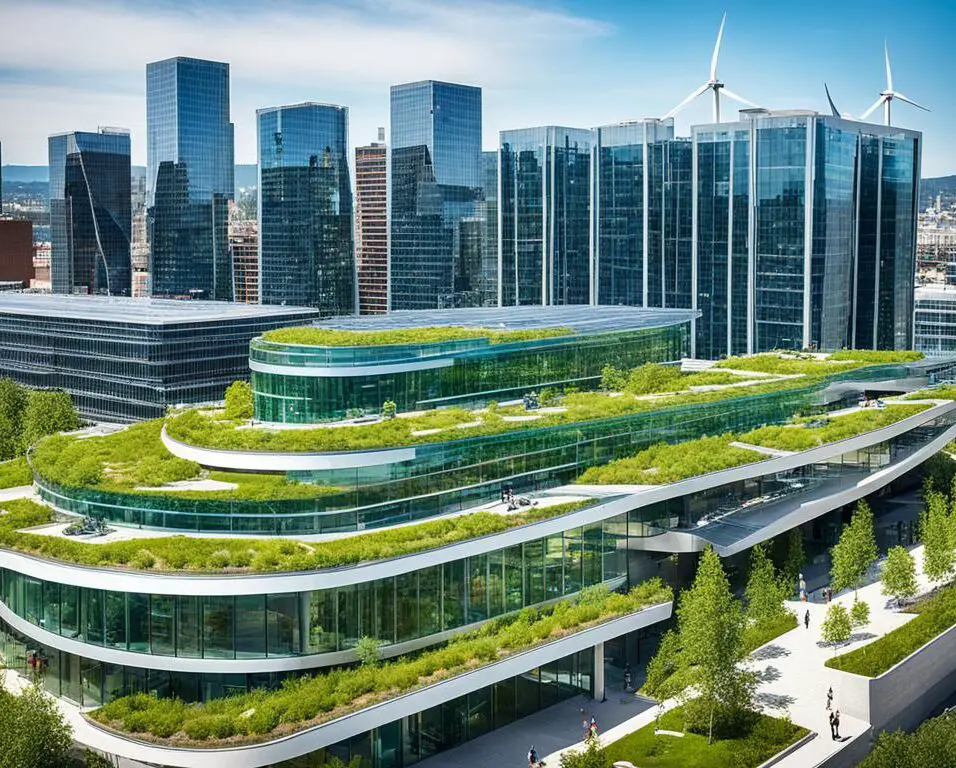Illuminate Your Space: Architectural Lighting Design Tips
Architectural lighting design is a key aspect of creating a visually appealing and functional space. It involves the strategic placement of lighting fixtures to highlight architectural features, create ambiance, and enhance the overall design of a space. From residential homes to commercial buildings and outdoor landscapes, architectural lighting design can transform any environment. In this section, I will explore some essential tips and strategies for achieving stunning and effective lighting design.
- Understanding the importance of layering in architectural lighting design.
- Incorporating natural light to maximize energy efficiency and create a dynamic lighting effect throughout the day.
- Embracing lighting controls and automation to enhance user experience and optimize energy usage.
- By following these tips and strategies, you can create visually stunning and energy-efficient lighting schemes.
- Thoughtful and well-executed lighting design can truly transform any environment, whether it’s a residential interior, a commercial building, or an outdoor landscape.
Understanding the Importance of Layering
Layering is a fundamental principle in architectural lighting design that involves the strategic use of multiple light sources to create depth and dimension in a space. By integrating different layers of lighting, designers can achieve a visually appealing and balanced lighting scheme. Let’s explore the three primary layers of lighting and how they contribute to the overall design.
Ambient Lighting
Ambient lighting provides overall illumination and sets the mood of a space. It creates a comfortable and inviting atmosphere, allowing people to navigate and interact within the environment. This layer of lighting is typically achieved through the use of general overhead fixtures, such as recessed lights or chandeliers. It ensures that the space is evenly lit and provides a foundation for the other lighting layers.
Task Lighting
Task lighting focuses on specific areas where activities require more concentrated light. It is designed to provide ample illumination for tasks such as reading, cooking, or working. Task lighting fixtures, such as desk lamps, under-cabinet lights, or pendant lights, are strategically placed to minimize shadows and enhance visibility. By incorporating task lighting, designers can ensure that functional areas are well-lit and tasks can be performed with ease and precision.
Accent Lighting
Accent lighting is used to highlight architectural features, artwork, or decorative elements in a space. It adds visual interest and creates focal points, drawing attention to specific areas or objects. Accent lighting fixtures, such as track lights, picture lights, or wall sconces, are directed towards the desired focal points. This layer of lighting adds depth and drama to the overall design, elevating the aesthetics of the space.
By strategically combining ambient lighting, task lighting, and accent lighting, designers can achieve a cohesive and visually captivating lighting design. The different layers work harmoniously to create a dynamic and engaging environment. Whether it’s a residential interior, a commercial space, or an outdoor landscape, layering in architectural lighting design is essential for creating a balanced and visually stunning result.
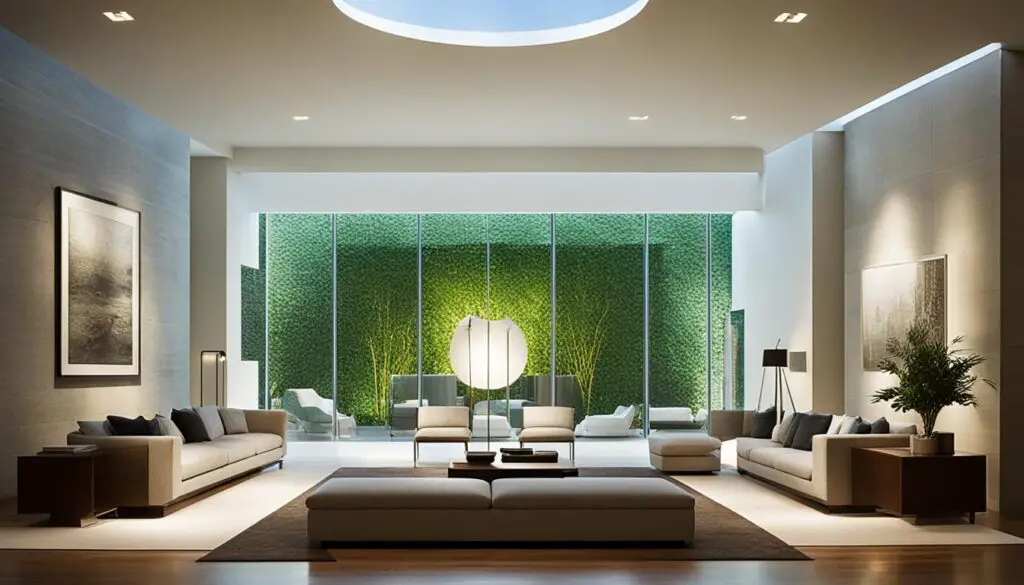
One crucial element in architectural lighting design is incorporating natural light. Natural light not only brings a sense of connection to the outdoors but also serves as a healthy and energy-efficient lighting source. By utilizing daylighting techniques, such as skylights, large windows, and light shelves, architects and designers can maximize the entry of natural light into a space.
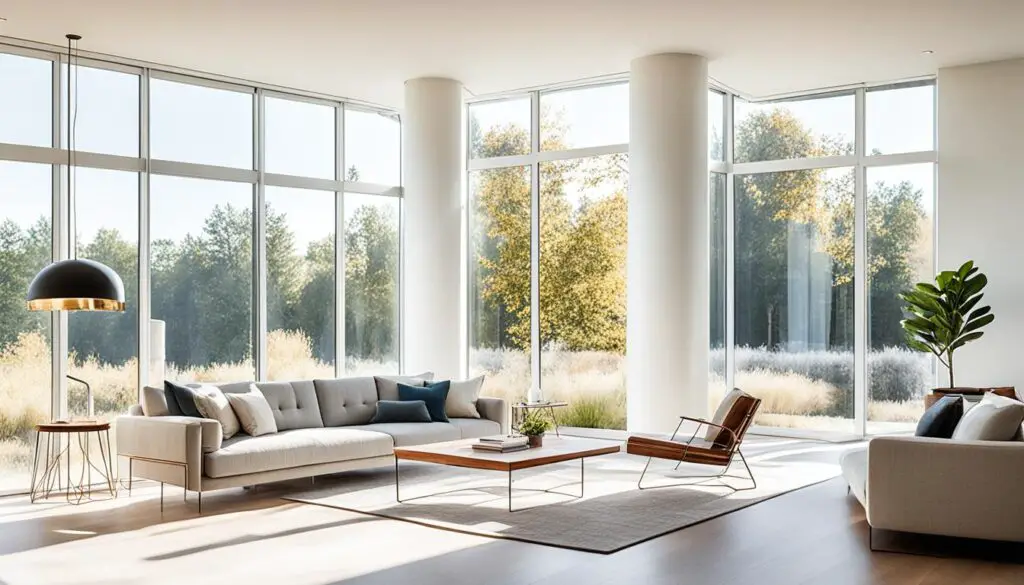
Incorporating natural light not only reduces the reliance on artificial lighting but also creates a dynamic and ever-changing lighting effect throughout the day. However, effective integration of natural light requires careful consideration of various factors.
Orientation and Window Placement
The orientation of the building and the placement of windows play a significant role in optimizing the use of natural light. By strategically positioning windows and incorporating them into the architectural design, designers can ensure the maximum amount of natural light penetrates the space.
Shading Devices
While natural light is beneficial, excessive glare and heat gain can pose challenges. To address these issues, shading devices, such as blinds, curtains, or exterior louvers, can be employed. These devices offer control over the amount of sunlight entering the space, reducing glare and minimizing heat gain.
“Incorporating natural light in architectural lighting design is not only aesthetically pleasing but also brings numerous benefits in terms of energy efficiency and human well-being.” – [Architect’s Name, Company Name]
By harnessing the power of natural light and implementing daylighting techniques, architects and designers can create spaces that are visually captivating, energy-efficient, and conducive to human well-being.
Embracing Lighting Controls and Automation
With advancements in technology, lighting controls and automation have become integral components of architectural lighting design. The ability to control and tailor lighting levels according to specific needs and preferences has revolutionized the way we illuminate our spaces. By incorporating lighting controls and automation, designers can enhance both the functionality and energy efficiency of their lighting schemes.
Lighting Controls: Enhancing Flexibility and Energy Efficiency
Lighting controls, such as dimmers, timers, and occupancy sensors, offer unparalleled flexibility in adjusting lighting levels. Dimmers allow users to create different lighting moods and ambiance, enabling them to transform a space at the touch of a button. Timers help automate lighting schedules, ensuring lights are turned on and off at specific times, contributing to energy savings. Occupancy sensors detect movement in a room and automatically switch lights on or off, preventing energy wastage when spaces are unoccupied.
Automation Systems: Revolutionizing Lighting Management
Automation systems, such as smart lighting, have revolutionized the way we manage our lighting. With smart lighting, users have the convenience of controlling their lights remotely through smartphone apps or voice commands. They can create personalized lighting scenes, schedule lighting changes, and even integrate lighting with other smart home devices. This level of automation not only adds convenience but also contributes to energy optimization by allowing users to efficiently manage their lighting usage.
“Lighting controls and automation provide users with greater control over their lighting, enabling them to create personalized lighting experiences while optimizing energy usage.”
By embracing lighting controls and automation, designers can create versatile and adaptable lighting environments that cater to the specific needs and preferences of users. Whether it’s adjusting the lighting levels in a home theater room, automating lighting schedules in an office building, or remotely controlling outdoor lighting, these technologies offer endless possibilities in architectural lighting design.
| Benefits of Lighting Controls and Automation |
|---|
| Enhanced flexibility in adjusting lighting levels |
| Convenience and ease of use through remote control |
| Energy savings and optimized energy usage |
| Personalized lighting experiences and ambiance creation |
| Integration with other smart home devices |
As technology continues to evolve, the possibilities for lighting controls and automation in architectural lighting design are expanding. Designers and homeowners alike are enjoying the benefits of these advancements, creating lighting experiences that are not only visually appealing but also sustainable. By harnessing the power of lighting controls and automation, we can truly transform the way we illuminate and interact with our spaces.
Conclusion
In conclusion, architectural lighting design is a vital element that can greatly enhance the aesthetics and functionality of any space. By implementing proper layering techniques, such as the strategic combination of ambient, task, and accent lighting, designers can create a balanced and visually appealing lighting scheme that complements the architectural features of a space.
Incorporating natural light through daylighting techniques not only reduces reliance on artificial lighting but also adds a dynamic and ever-changing element to the lighting design. By maximizing the entry of natural light into a space, designers can create a more sustainable and inviting environment.
Furthermore, the use of lighting controls and automation technologies offers greater flexibility and energy efficiency. By utilizing dimmers, timers, occupancy sensors, and smart lighting systems, users can easily adjust lighting levels, create lighting schedules, and optimize energy usage.
Incorporating these lighting design tips, including layering, natural light, and lighting controls, can help designers achieve stunning and energy-efficient lighting schemes that transform spaces into visually captivating and functional environments.



